IMPROVING THE REPRESENTATION OF CARE WITH OLDER ADULTS
This work is part of my ongoing project Reimaging Aging, which disrupts popular media depictions of aging by engaging older adults in the creation and dissemination of their own stock photos of aging.
For my master's thesis, I leveraged human-centered design to reimagine patient-centered care interactions. Reimaging Healthcare engaged older-adult patients in a series of participatory design workshops to create their own "stock" photos of healthcare. The process enabled older adults to express their unique preferences for care interactions; revealed participant aspirations for wellness; and empowered patients to gain a more holistic perspective of their care experiences.
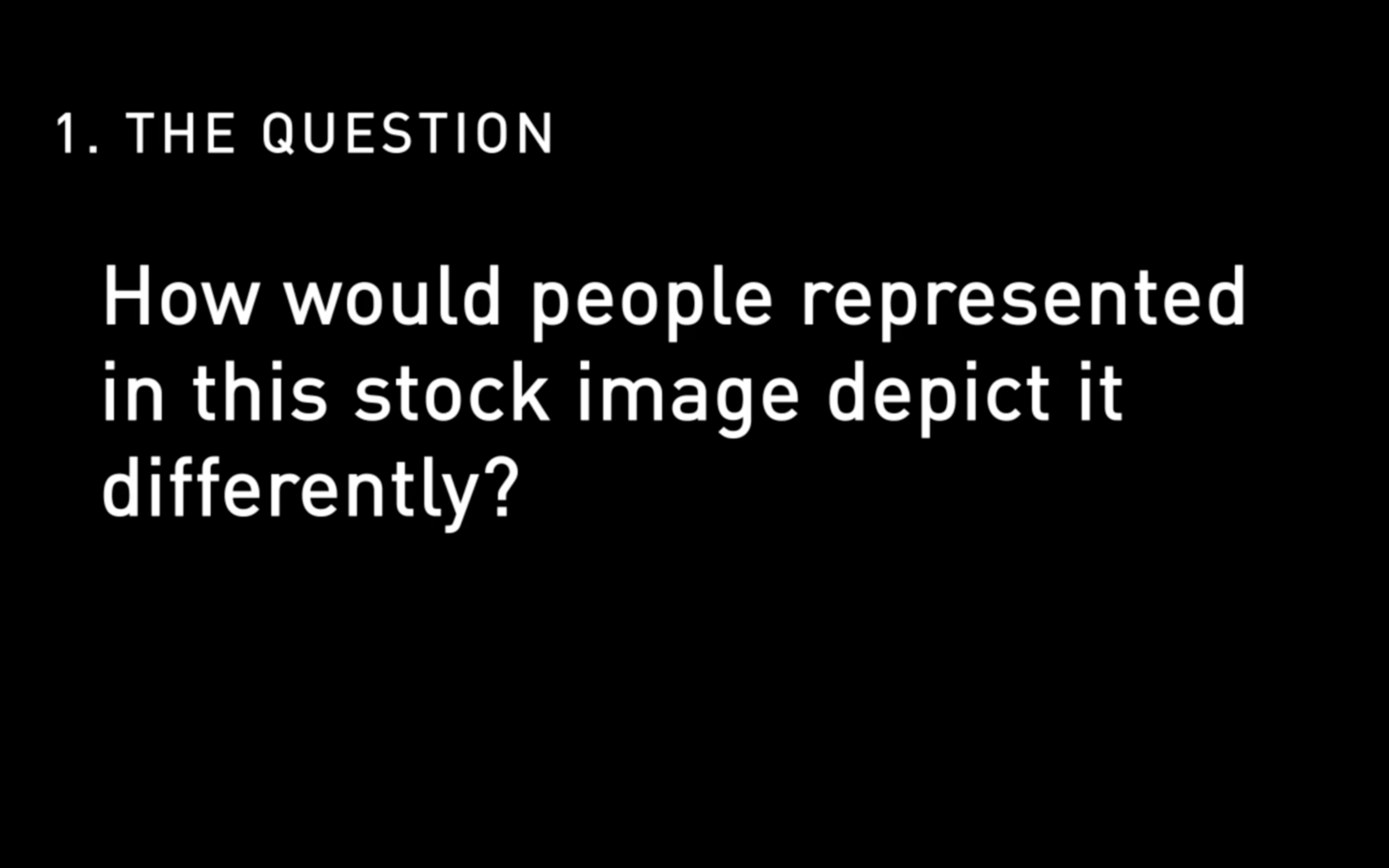
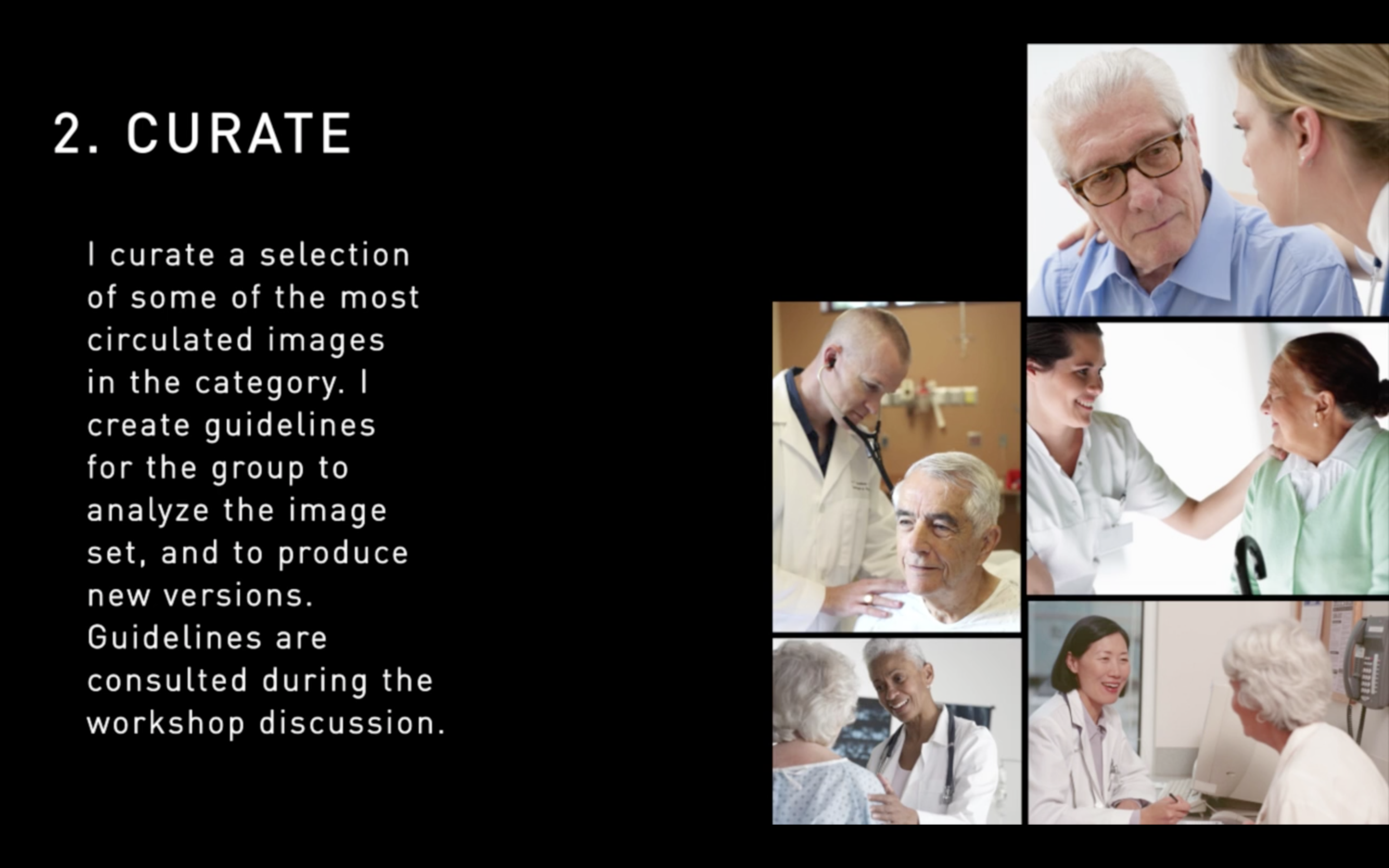
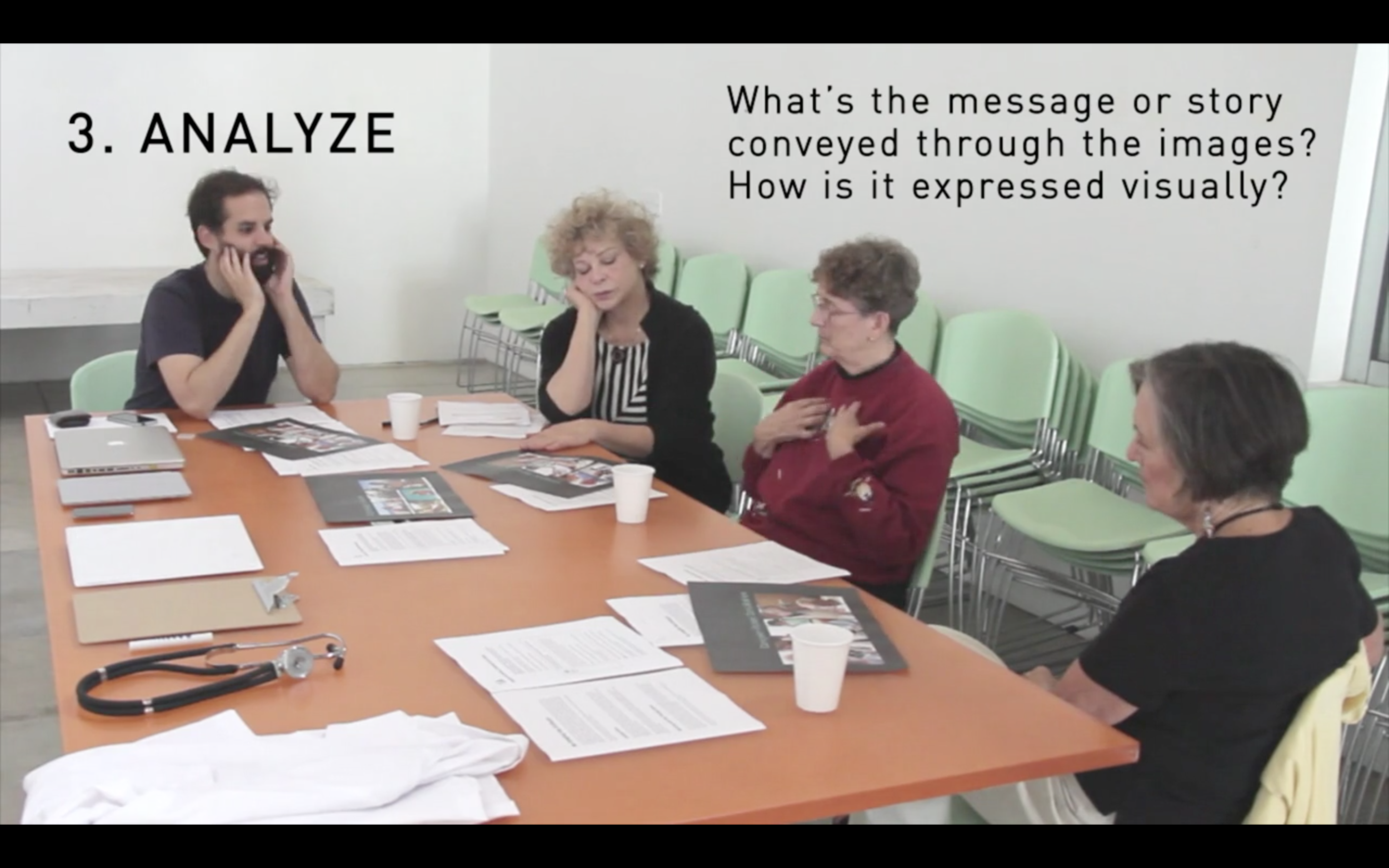
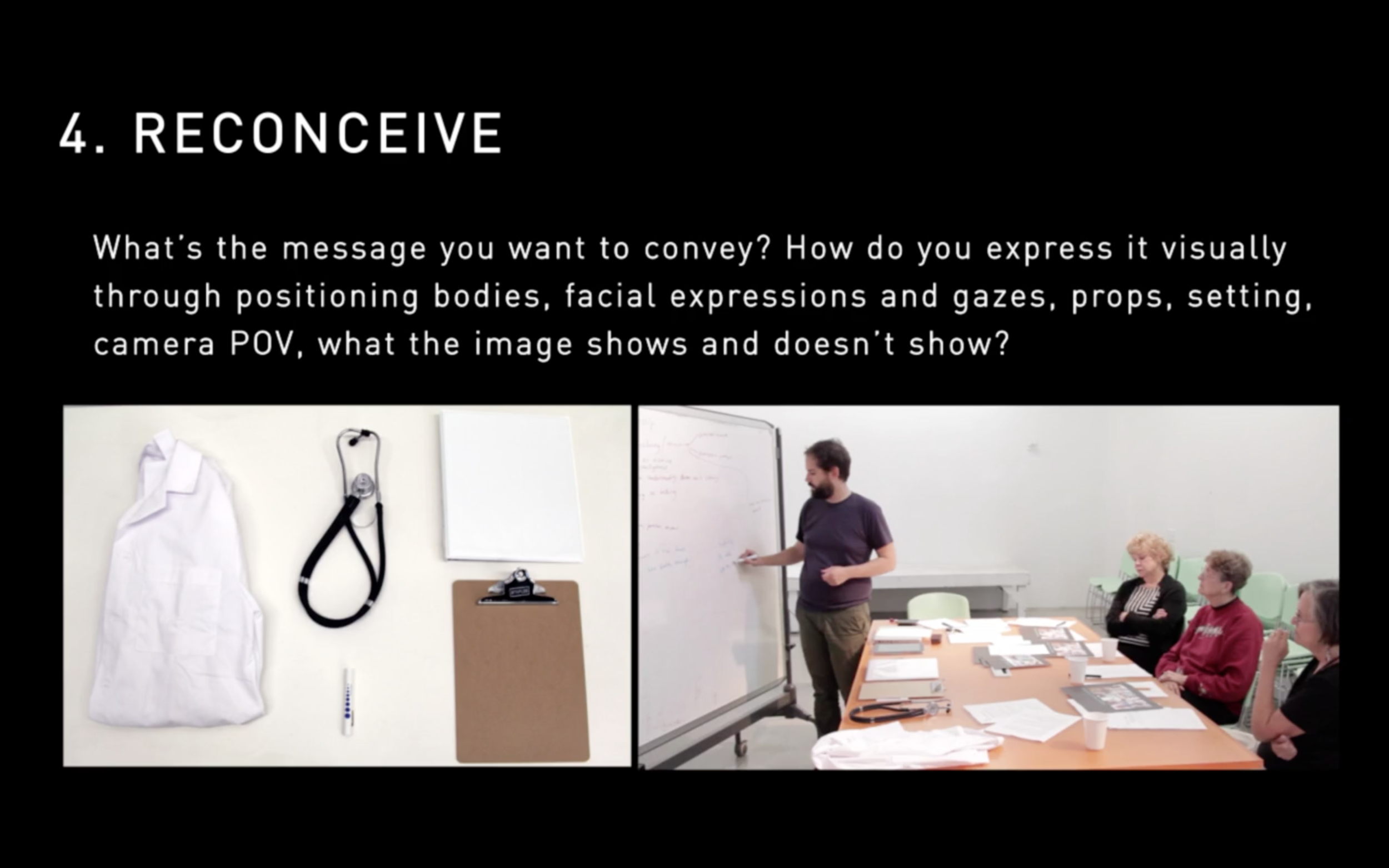
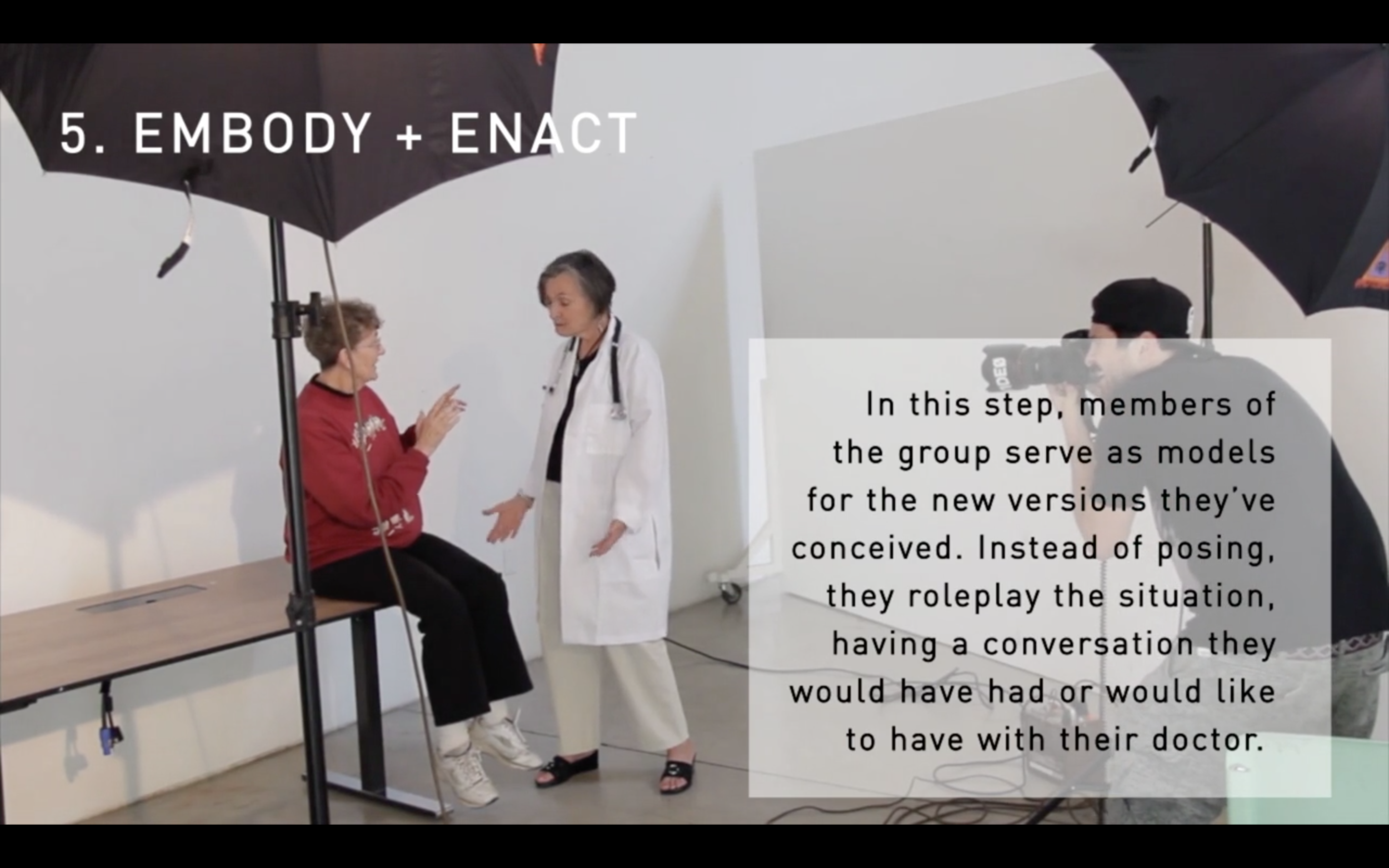
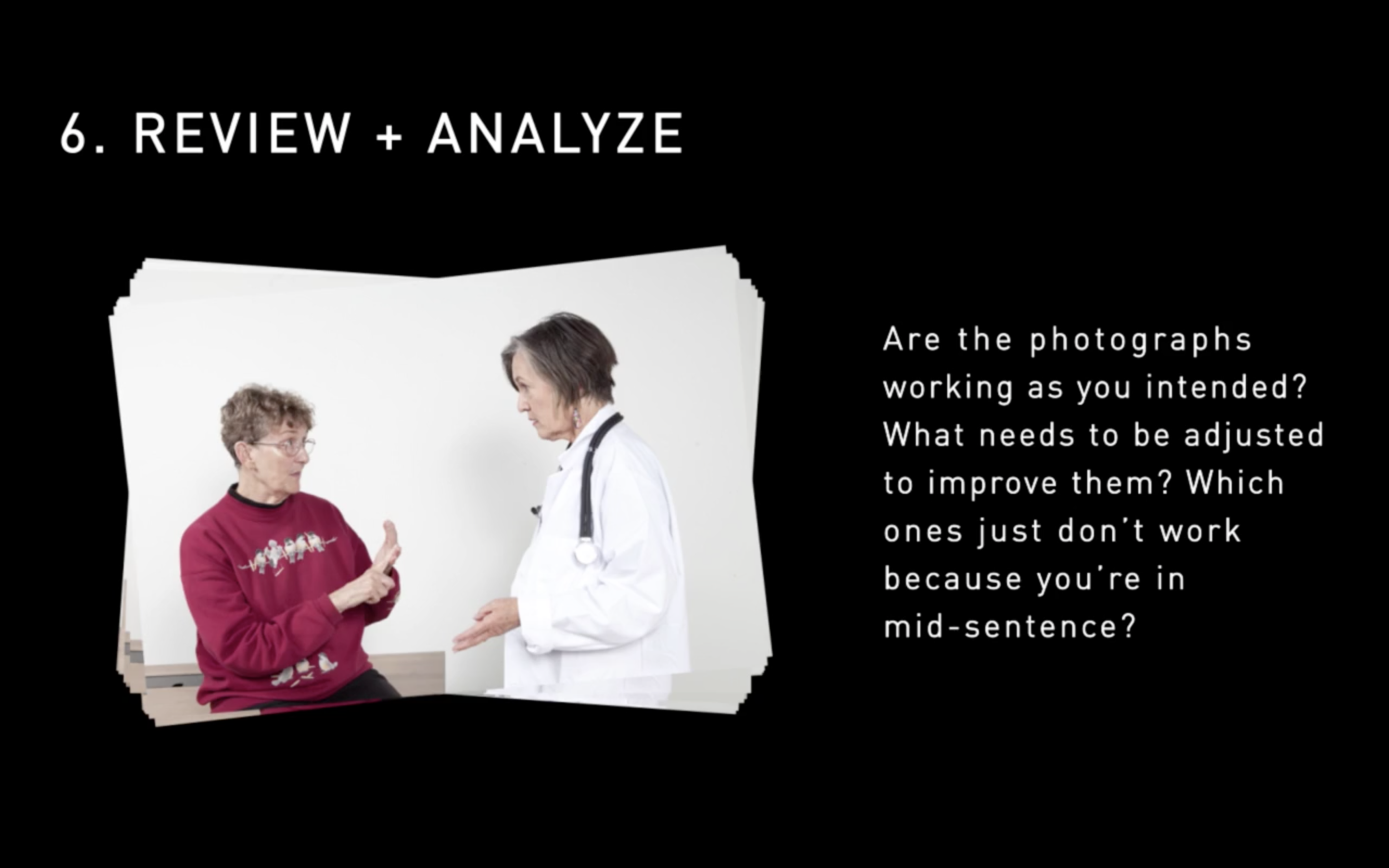
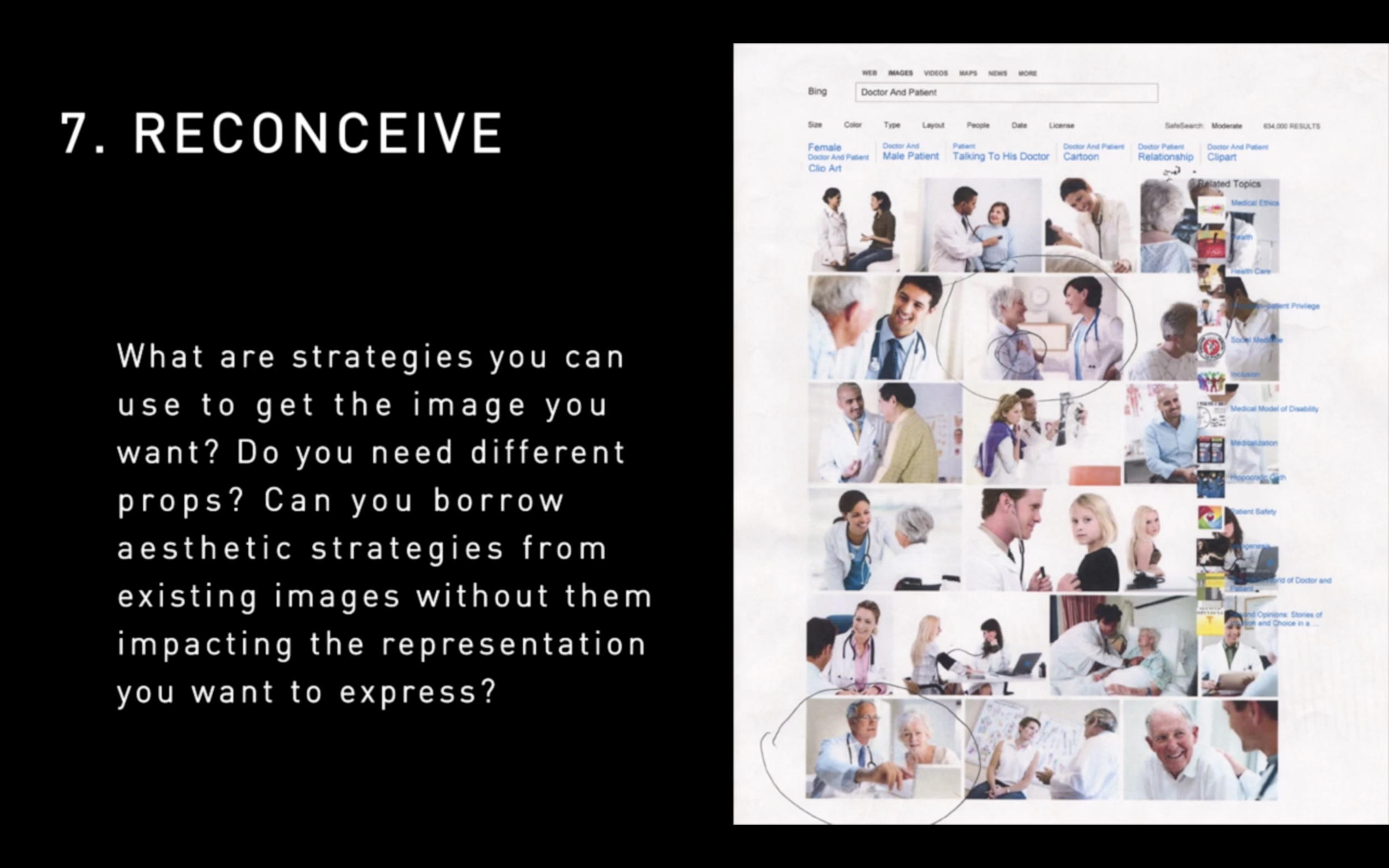
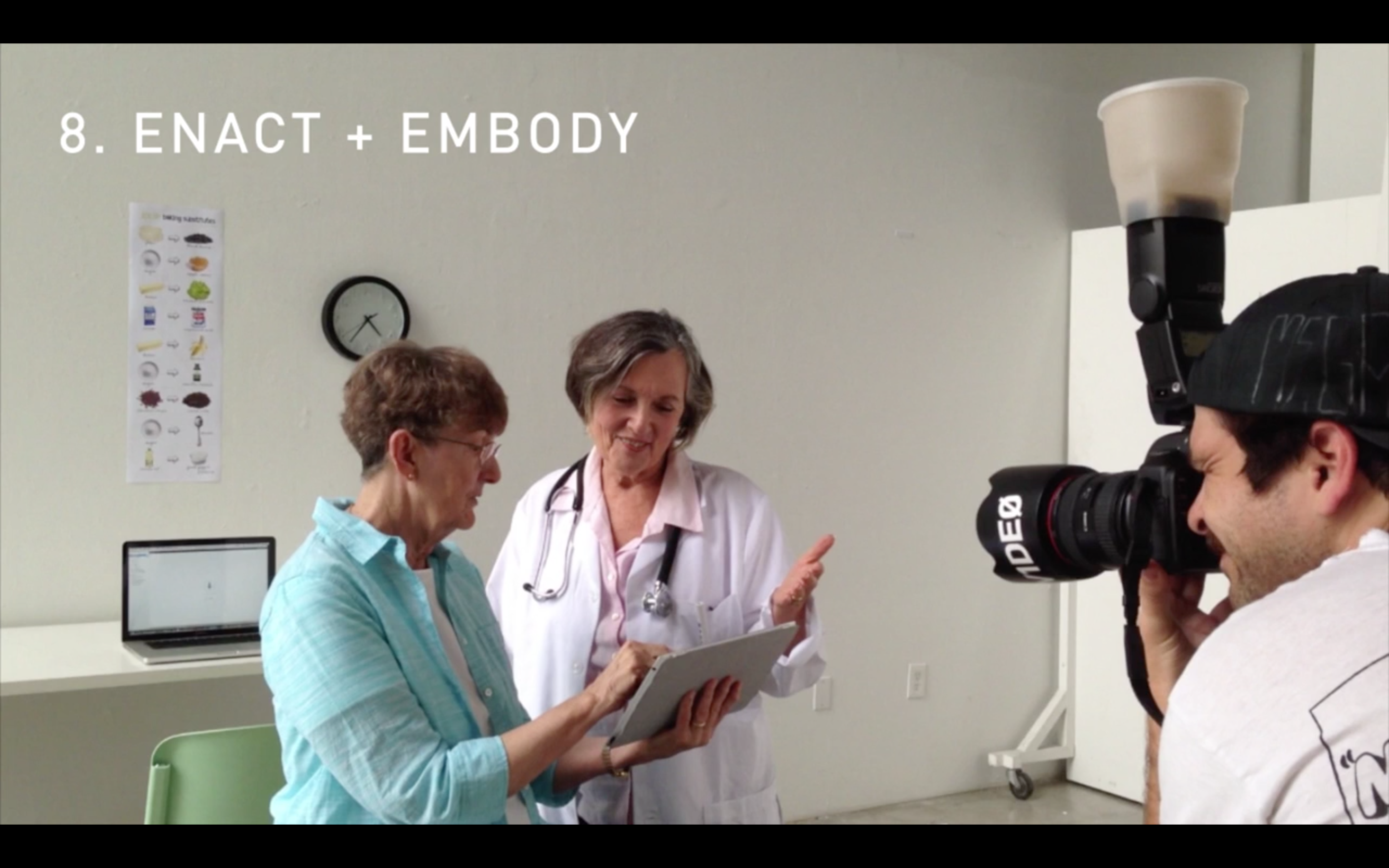
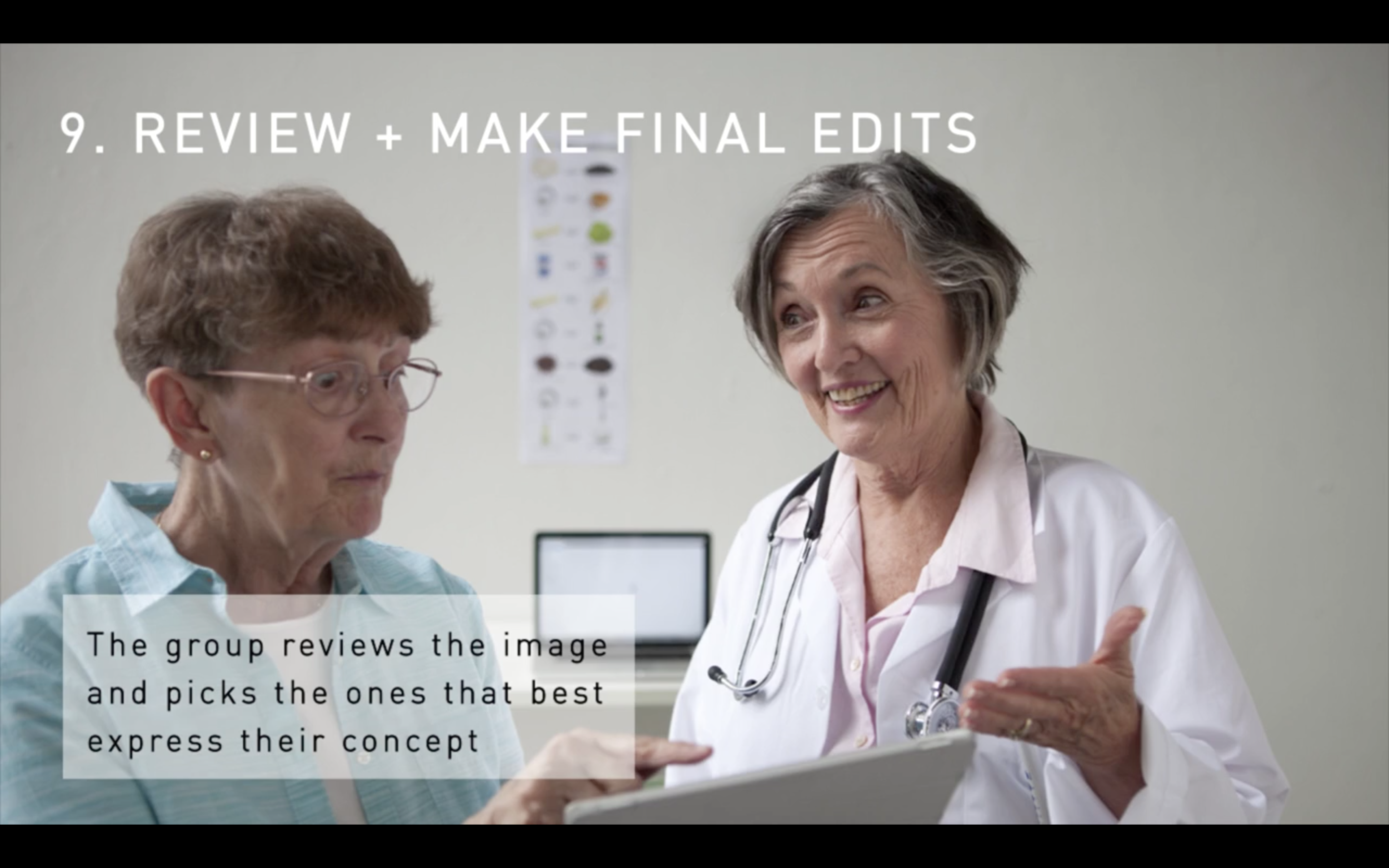
PROCESS
To ensure the participatory design workshops would yield both improved commercial photos and significant insight into participants' experiences with and aspirations for care interactions, I developed tools to enable participant agency. I curated a set of existing stock photos featuring a doctor and older-adult patient to prompt discussion, and made a Guide to empower participants in the process of creating their own photographs.
The conversations spurred by these tools were incredibly lively. Participants felt existing commercial photos were largely demeaning and patronizing to older adults. One participant noted, "What I see here in every picture is an unconscious dominant-subordinate relationship established. And the elder is subordinate in every picture." Another participant reported, "This says, 'Just take your pills and shut up.' " Their reactions weren't surprising, but I used these negative reactions as an impetus for participants to analyze how each image visually expressed its message, and to brainstorm and ultimately produce alternative versions that better reflected their values about health and well-being—and more specifically their preferences for care interactions.
Participants served as models for their own images, which proved crucial to uncovering their experiences and aspirations. Rather than simply pose, I had participants actually embody the roles of doctor and patient, allowing them to enact the conversations they want to have with their physicians but rarely do.
PARTICIPANT IMAGES + PROJECT INSIGHTS
The final images reveal participants' values and preferences for transforming and improving their healthcare experiences. The group privileged partnership and open communication in a doctor-patient relationship focused on promoting well-being in all interactions.



IMPLICATIONS + OPPORTUNITIES
Participants were clear—they valued a team-based approach to wellness, emphasizing social health, communication and quality of life. They're not alone.
Their preferences jibe with the practices of leading geriatricians, like Chad Boult of Johns Hopkins. His team has improved patient lives through closely observing everyday behavior, simplifying medications, and red-flagging signs of isolation. Participant insights are consistent with many healthcare systems, who've changed their messaging to emphasize holistic approaches to care since this research was undertaken. Even stock sites like Getty Images and Shutterstock have caught on, encouraging contributors to produce less stereotypical, more nuanced imagery focused on wellness.
In order to implement comprehensive community health visions with lasting impact, various stakeholders must collaborate to move beyond the current siloed model. Direct patient care will be an important piece of that equation. Suraiya Rahman, Professor of Narrative Medicine at USC's Keck School, has adopted my process as a way to help students build greater empathy for their patients. I believe those future patients will be well served by compassionate, thoughtful, communicative, and collaborative health practitioners.
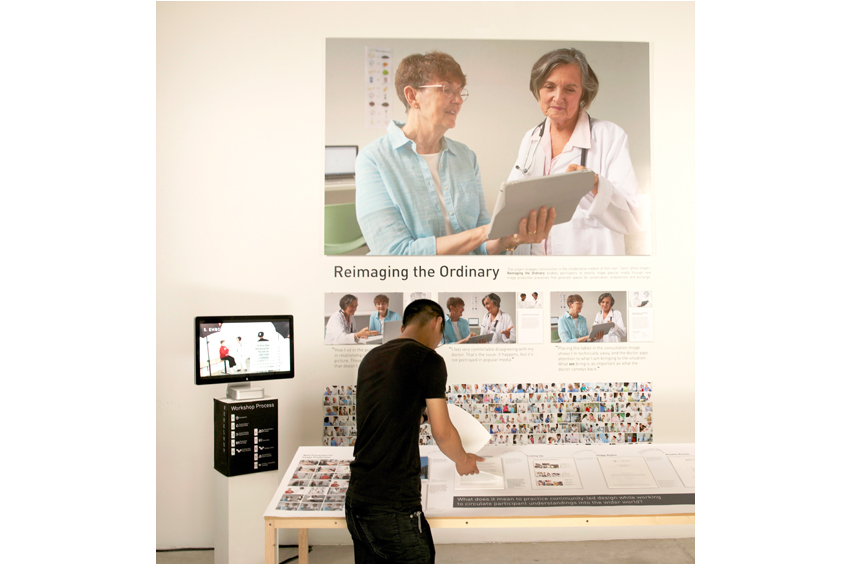
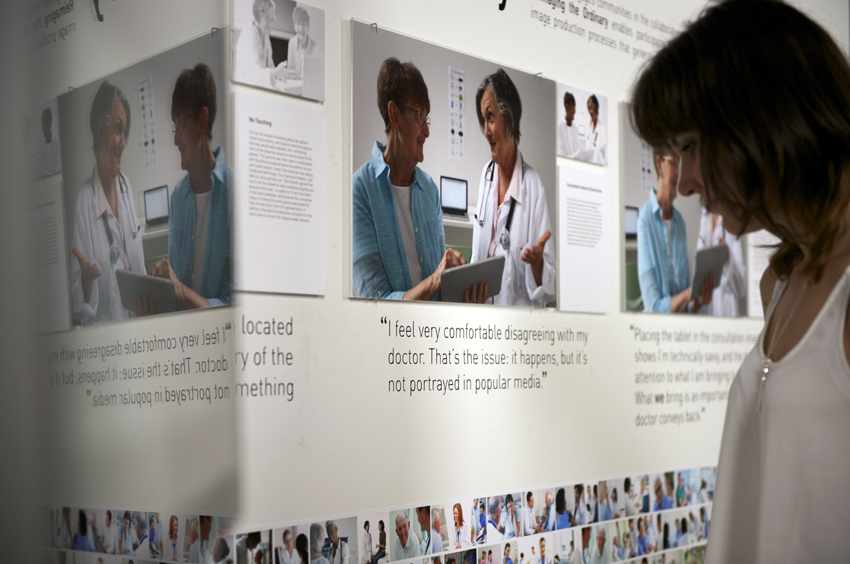
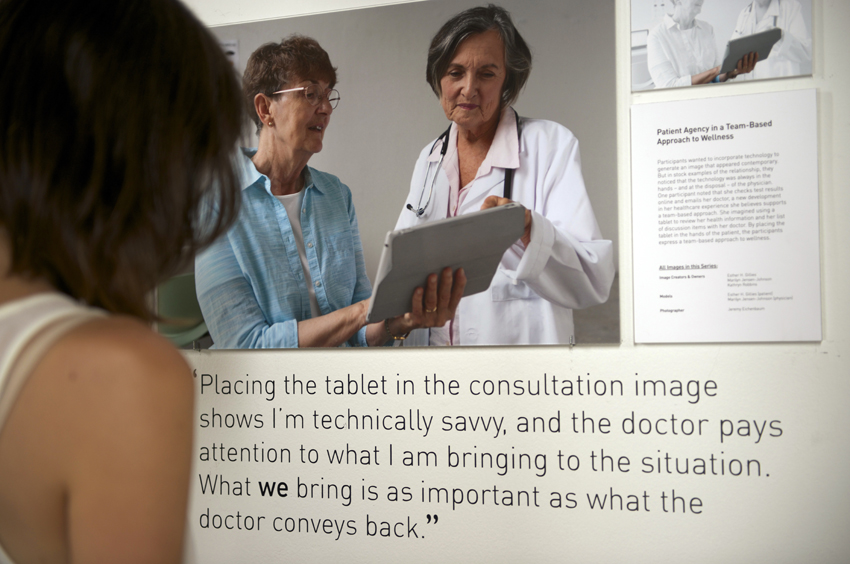
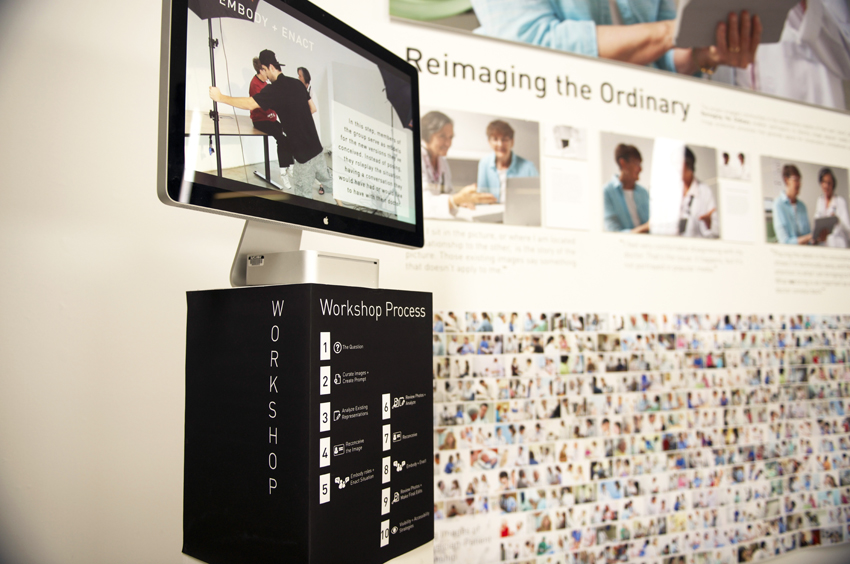
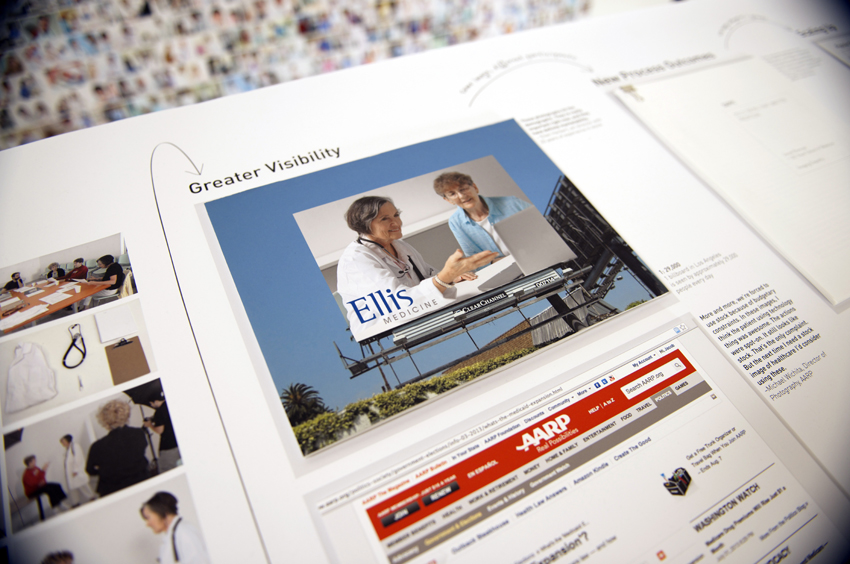
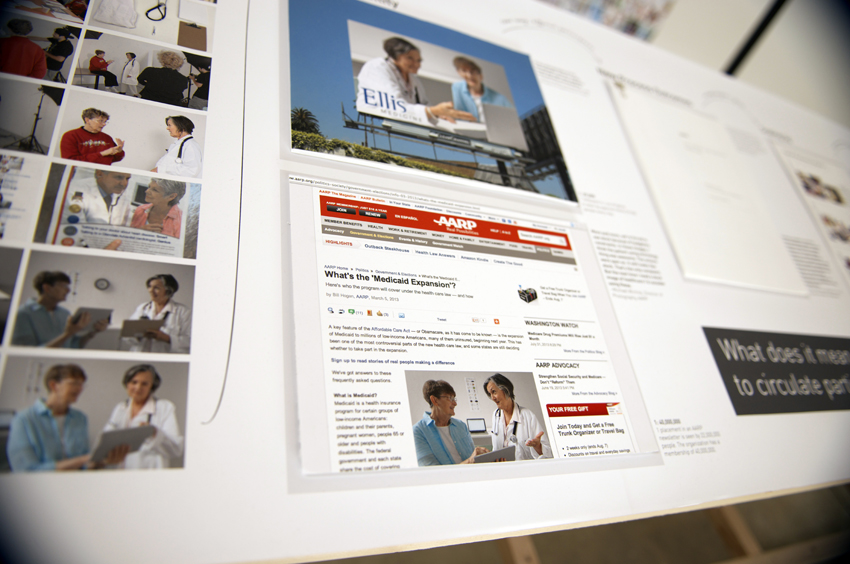
Greatest thanks to Esther H. Gillies, Marilyn Jensen-Johnson, and Kathryn Robbins, who shared their experiences to craft these images. And Elise Co, Rosten Woo, Jemima Wyman, Anna Mayer, and W.F. Umi Hsu for design feedback and critique.
